The Mojave Trail
Posted on February 1st, 2014 in Uncategorized | 4 Comments »
By Dave Boyer
2012-2014
In the lower US there are a handful of exceptional off road trails that stand out in the expedition world. The Mojave Trail located in the Southern California runs through a section of the 1.6 million acre Mojave National Preserve and is considered by some as a premium off road route. It also draws visitors from outside California including those from other countries who wish to ďoverland??? portions of America. The trail is longer than average and although it crosses a few minor roadways, much of the landscape is remote in nature. Several sections remain as it was in the pastÖmuch of it like it has been for over a hundred of years. Because of the trails old west history, Iíve always wanted to run this route.
Also called the Old Government Road, most of what can be traveled today is based off an old Infantry supply route, but over the years some sections have been diverted from the original wagon trail. The total mileage is about 130+ miles long and can be done in 3 or 4 days. Just take into consideration that there are sections both on and off the trail that can be explored which might require extra time on your part. Although considered an off road trail, most any standard four wheel drive SUV should be able to navigate the majority of the terrain, weather permitting. Itís important to note that any 4×4 trail is subject to change. A brief heavy downpour of rain can make some trails impassable in a short period of time and itís no different on this route. Besides the possibility of rain causing problems, blowing sand, extremely high temperatures and even snow can turn this mild trail into a difficult passage. Itís always best to call about the condition before attempting it. Be aware that there are portions of the trail that might require specialized equipment that doesnít come stock with the average factory equipped SUV. Correct tires and recovery equipment along with the knowledge of how to use these items may be crucial in making it through some of the tougher sections. Most of the difficult parts of the trail can be bypassed but there are no warning telling you whatís ahead. Another issue can be cactus such as the Teddybear Cholla. These little spiny plants can puncture the sidewall of your tire and ruin your trip. A good spare, a compressor, tire repair kit, and a can of flat repair is worth having on board. Basically the phrase is be prepared for desert travel.
Amenities:
Because the route crosses several well maintained roads, getting off the trail for supplies is fairly easy. The best plan is to be fully loaded with spare fuel on hand to get you out of a jam if required. My biggest issue is usually running out of ice, propane or firewood, and lastly diesel. Starting from the east, Needles has everything required to prep for the run. After that Bullhead City, Searchlight and finally Baker on the western end can supply what you need if you run low on something. Palm Garden Chevron close to the start of the trail at 163 & 95 has diesel and a small food mart. The local towns require a 20+ mile trek depending on where you leave the trail. Baker lacks larger grocery stores and is just a pit stop along I-15 but they have fuel, food, ice and propane. A-1 All Night Services located in town at 72572 Baker Blvd not only has propane but also is a tire shop and tow service. (760) 733-4380. They will pull you out but I donít know at what price or how far they will go. I generally make contact with the local services before I need them. Itís just an added bit of security. Itís possible there are other smaller stops that have fuel such as Primm N/O the preserve and Fenner off 40 thirty seven miles W/O Needles but the others mentioned have the major shops. Call ahead to make sure diesel is available at the smaller gas stations.
History:
Partially based off an ancient Indian trail, the original foot path wandered through a dry desert region that generally required water to survive the trek. For hundreds of years Indians knew the location of watering holes along the route which allowed them to travel from the Colorado River to the Pacific Ocean. According to historians, the original route was much longer than whatís left today, and some say it once reached from San Pedro California to Prescott Arizona. The path was also used by early American explorers, missionaries, pioneers, and immigrants between the 18th and 19th centuries. Father Francisco Garcťs who gave the Colorado River its name was probably the first non-native visitor to traverse the Mojave trail in 1776, but it wouldnít be until 1826 when the first American explorer Jedidiah Smith traveled the route. During Smithís expedition, he used two Mojave Indians as guides to reach Spanish Missions on the coast. After California was annexed as part of the United States, it was the US military that exploited the trail between 1848 and 1871 converting it into a well-used wagon trail. Fort Mojave was established southwest of Bullhead City Arizona along the Colorado River in 1859. In 1860 the army founded a second outpost titled Camp Cady which was put in service a few miles north-east of the present day community of Newberry Springs. The trail connected the two Army posts and was generally used by military personnel as a supply route. Indians not only resisted the intrusion of the army but also the settlers using the trail that passed through their homeland. It became necessary for soldiers to routinely patrol the route to help protect travelers against the tribes who molested the pioneers attempting to colonize the west. Several minor outposts were established between Fort Mojave and Camp Cady. Most of these smaller infantry camps were located where water was found which also provided a stopping point during a full days ride. One of these was Fort Piute. Still accessible today, it makes for one of the interesting stops along the trail. Of course everybody knows who finally won during the conquest of the west and over the years the Indians were held at bay under what some think of as questionable means. Moving into the 20th century the Army outposts were no longer needed and eventually abandoned but the trail remained. There are only a handful of original wagon trails in the United States that have been left as intact as the Mojave Trail is today.
December 2012:
In late December of 2012, I talked my buddy Don in doing the Mojave Trail. We tried to get a few other buddies with vans to do the run but itís kind of hard to get any kind of commitment between Christmas and the New Year holiday. So it would be a one vehicle trip and although it would have been nice to have company I was still eager to explore the region. I drove down to Merced to pick up my buddy Don and we were on our way.
Rather than starting from the traditional end at the Colorado River, the western section was chosen as the starting point. This was due to time restraints only. The plan was to drive the short distance through the Manix Wash into the Mojave Wash and on to Afton Canyon campground for the night.
This map gives you an idea where the trail starts in relationship to Barstow and Baker. Camp Cady was close by but wasnít on the list to visit. Apparently there is some kind of plaque at the site and Iíd like to check it out one of these days.
Although the start of the Mojave Trail off highway 15 isnít part of the original government path, the beginning of the route heading into the Manix wash was easy going.
There are a few trails that split off the main path at the starting point but the Manix/Mojave route is well marked and follows a transmission line for a slight distance. (Click on map to enlarge)
The letter designation ďAC??? stands for Afton Canyon. About the only time youíll see these markers are at a few sections where other trails intersect.
I wouldnít say the terrain was ugly but an average rating for scenery might fit.
The trail west of Afton Canyon has some of the finest grit sand Iíve ever encountered and the last thing I was wanting to do was to stop and get stuck just to snap a picture. I got this fuzzy shot on the run. You can see all the bike trails in the sand. The wash is wide in spots and with so many tracks running in all directions I didnít know what side of the wash to drive on. I just picked what looked like the best track but some were dead ends for large vehicles.
I didnít like traveling it by myself, and burying my van was on my mind while running through both washes. Mud terrain tires are not the best choice and after we hit heavy sand I found out my front locker was out. The sand was so deep that I was leery of even stopping to air down. The mantra was ďgo, go, go???. Because flash floods move through the wash during heavy rains, the trail changes radically during the wet season. But this year was very dry and the rangers claimed this caused the sand to be deeper than normal and unusually fine. Heavy off road traffic didnít help either. Having to stop and look for the correct path was a bit nerve racking but we did the run without ever sinking my rig. This is not the place for the newbie off roader with a stock 4×4. Correct tires and the recovery equipment discussed earlier should be considered standard on board gear while running this portion of the trail.
I was somewhat relieved to finally make it to the railroad signal lines where the trail greatly improved but what lay ahead was still a mystery. As the sun set I was looking forward to the end of the trail. Generally I enjoy running at night but with trails running all over the place I didnít want to veer off the main route. Finally we reached Afton Canyon.
I was surprised to see water in the Mojave River.
One thing that freaked me out were the low lines. I noticed that there was a two wire circuit on the top arm configured as a high voltage line and my antenna was very close to contact. Although nothing touched, next time Iíll tie back the antenna.
Soon we reached the underpass and knew the campground was right around the corner.
Afton Canyon campground looked awful from what we could see in the dark but it did in a pinch. I was just happy to relax on hard ground.
We kicked back, had a smoke, a few drinks, and made some dinner. The big discussion was about whether we should head to the opposite end of the trail and start from the Colorado River or continue from Afton CG. Feeling exhausted we crashed fairly early. After lights out, the sound of a train rumbling by woke me up. For what ever reason I thought it was cool. The engine never let off a blast of its horn as it slowly snaked its way by the camp making an eerie creaking sound. I wished I would have taken a picture but it would of required a tripod and all I wanted was to grab some more Zís. Looking outside just before sunrise I saw the plans we had discussed were going to be trashed. During the early morning the rains had came in. Great, what would be next?
The rising sun shed light on what we had driven into the night before. We grabbed some coffee and grub while talking about what effect the rains would have, then had a look around camp.
Not the most scenic spot Iíve ever been in. At least there wasnít anybody around during our visit.
I wasnít too thrilled about finishing the trail not knowing its condition after the rain. Being Don stays in a tent it didnít help things either and the weather forecast showed more storms approaching. Sure, a little water helps driving in sand but we both knew about the Soda Lake. Terrain like that can become slippery and clogs your tires. I would have had a different view if I was traveling with other vehicles. My goal was to do the complete trail, not sections of it. Disappointed, the trip was re-evaluated.
The world was supposed to end in December of 2012 but all that ended for us was finishing the Mojave Trail. We would have to wait until the next year and hope for a good weather window.
Fast forward to December 2013:
I always try to grab as much time off from work during the holidays. In the past Iíve set up trips during the New Year which is my favorite time to visit the desert. We had an unusually dry winter in California especially down south. Timing couldnít have been better for finishing the Mojave Trail. Don cleared the trip with his wife and we planned for the second attempt at finishing the 130 mile off road trek.
I hit Merced about 10 AM and picked up Don. With Donís wife standing at the front door waving goodbye and tears flowing, we drove off down theÖ UmmÖit didnít actually go that way! She probably wondered if my Ford 6.0 was going to break down again. She claimed every time we go something breaks and to tell the truth that was in the back of my mind as well. We headed out of central California bound for Needles and the beginning of the Mojave Trail. Because of a late start, Needles was out of the loop so we decided to grab a campsite outside of Barstow along Mule Canyon Road close to the Calico Ghost Town. This place is a dirt bikerís paradise which was definitely apparent upon arrival. The place was packed and although we found a private spot, it was next to the road that was active most of the night. The dust was more of an issue and after numerous vehicles passed by over the hours I came to the conclusion that Afton Canyon campground might have been a better choice. One idiot started doing donuts at the entrance of our camp during the evening. Jerk!
In the morning I was surprised to see how trashed out this place was. The Mule Train road itself was quite scenic but I doubt Iíll ever come back here to camp.
Being it was fairly early, a drive up the canyon was worth pursuing. Was it possible that one unique camp could be found just around the corner? Nope, just more campers, trailers and huge toy haulers occupying any spot available.
The trail looped back close to the starting point but pushed for time it was faster to turn around and returned the way we came in. Several vehicles were coming in for the New Year holiday and I can say I was happy to leave this area.
Barstow was next on the list for some morning breakfast and diesel. I was surprised that a town of this size didnít provide a good restaurant but maybe that hole in the wall greasy spoon was just hiding from us.
This place was bad; worse than Dennyís even though that might be hard to believe.
After leaving Barstow, Highway 40 took us to the trailís starting point. I noticed that along side of the highway, the old Route 66 path paralleled 40. It would have been great to have the time to drive the old highway but the day was short. My vehicle map showed the Bagdad Cafť which triggered a memory from the past but I couldnít put my finger on itÖperhaps a place Huell Howser visited once. A quick visit to Bing revealed a movie was made there in the past but I didnít recall ever seeing it.
Iíll admit the Highway 40 drive was a bit tedious and seemed like it took forever.
I guess I was experiencing that ďare we there yet??? feeling. Finally Needles was within out grasp. After fueling up and grabbing some junk food it was time to head toward the Colorado River and the start of the Mojave Trail.
Along the way, farmland dotted the land providing scenery which was slightly pleasant to the eye.
Finding the start of the trail was somewhat more challenging that I thought it would be.
We found numerous roads that led to the river. There was also a newly built Indian gaming casino close by where the original trail started that wasnít on the map.
We finally figured it out and even though it might be trespassing to get to the river, I turned into a field toward the bank of the Colorado to pick up our rock.
(Donís chunk of the Colorado)
Some may ask ďRock???? The tradition is to take a rock from the riverbank and take it to the Travelers Monument. Along the trail somewhere there was supposed to be a stopping point where visitors drop off their Colorado River rocks. Around this pile of stones was some kind of a plaque inscribed with something written that only the traveler can read and keep as their own secret not to be divulged to the public. Hopefully we would make it to that point.
The trail led to the hills in the background seen in the picture above. The Indian Tribe has changed the surrounding desert into farmland and although you might be able to run the section through the fields and to highway 95, I opted to bypass that section.
Again I must advise to purchase a good trail book to help navigate the route. I was equipped with topo maps that had the trail marked off, plus real time GPS maps which were extremely helpful. Iíve been told the Mojave Road Guide by Dennis Casebier is well worth the money. I do wish I had the book because it has information on treks off the main trail and some good history.
The turn off highway 95 was difficult to find but eventually the maps synced up. As the trail headed into the backcountry it was a good feeling to finally get going. Our goal was to make camp at Piute Springs and Fort Piute before dark. It was late but the fort was only about 23 miles away.
Some regions were slightly steep but didnít require four wheel drive.
In the sandy sections there were only a few spots that were deep but still nothing that pushed me outside to lock the hubs. It was becoming more scenic for a desert setting.
Spiny cactus kept my radar up. I didnít want to drive into one at all.
These things are mean and I wouldnít want to tangle with any of em.
The trail was quite diversified, changing from a mountainous terrain to a flat sandy plateau. Not far up the trail the route would again cross over another set of hills.
(Looking back towards the Colorado River basin)
Soon the trail crossed over some of the steeper sections of the route.
At least the ground was solid and the trail wasnít too rough.
The sun was setting and camp was a ways off. It looked like another night run.
This was possibly some kind of border crossing and maybe where the Preserve boundary started.
Time for some LED action.
The trail was pretty smooth until we reached the power line road. The spur to Fort Piute was very rough and slow going.
I donít know if youíre supposed to camp at Fort Piute but we set up at the parking lot anyway. It had been a long day and with the wind blowing and cold temperatures, party time was going to be inside the van. With the late lunch still satisfying, alcohol was more on our minds.The first 23 miles of trail had gone well. It was a great night and it went quick but the drinking finally took its toll. Every time I woke during the night I wondered what the Fort looked like and was anxious for morning light.
I woke before the sun was up just to grab a few photos.
(23 miles from the Colorado)
Like Iíve said, itís always interesting to see what you drove into during the night.
Besides the water located here, it was obvious that this was a good spot for a small Army outpost. The views were spectacular.
After coffee, we explored what was left of the old Army fort.
This was the main building on the site. The plaque showed the structures layout.
The main section of the outpost is not much to look at and somewhat hidden by the brush in this picture but just thinking about the soldiers who manned this ďRedoubt??? really makes you wonder what it looked like during its hay day.
The main section of the corral is not visible but the section still standing in the picture above is shown in the lower portion of the Google image below.
Strange how the Google image makes the area look clear of brush.
Water was flowing in the creek but thick brush restricted the view.
We met a couple running the route.
Figuring they would probably out run me, we let them leave out in front of us. It was time to pack up and hit the trail.
Off camber and rough, the 2 mile spur up to the fort seemed to take longer than the night before.
Spiny beauty in the desert.
This was a site that was once a homestead and turkey farm located below the Fort along Piute Creek.
The original trail that once ran through and beyond Fort Piute has been re-routed down along Cable Road. The bypass trail runs south along the power lines for just a slight distance then splits off back west over the Piute Range which climbs quickly from 2450í to 3400í and continues a slower steady rise through Lanfair Valley.
(Colorful desert setting)
The trail started the climb at this point and although the picture below doesnít show how steep it was, I had problems here.
I drove into a rut and got stuck. Attempting to back up, I ran the rear differential into a rock. We pulled the van out of the hole using the winch then stacked rocks in the rut so I could clear the bolder I hit. After the rear end was clear I could take a better stab at the trail.
Well the terrain got steeper and the trail became rocky and loose. The next few minutes was nothing but a struggle. I made several attempts in a couple of spots that had me scratching my head. Finally it occurred to me I might have screwed up.
Don was spotting and on my third shot I drove up the last section like it was nothing. Don yelled ďman you just crawled up without spinning a tire, what did you do????
As I drove past him I said ďI engaged the rear axle???. The whole time I was in front wheel drive only. Great! It sure didnít do much for my front tires.
Off the grade, the trail flattened out as it entered the Lanfair Valley.
The path was smooth and the the ground was firm considering how sandy it looked.
(Typical terrain at +/- mile 34)
The Mojave Trail meandered in and out of gullies and washes but was mainly a nice lightly steady climb through Lanfair Valley. The trail climbs about 800 feet until it reaches Ivanpah road several miles away.
About half was between the Piute Range and the upcoming Ivanpah Road we found this old site. Lots of bullet holes none of which would end up being mine.
The road narrowed and became almost canal like.
One thing I kind of worried about were cactus so close to the edge.
There just wasnít a lot of room for a large vehicle. My tires rode partially on their sidewalls in spots.
Some of the spots were way off camber. The trail soon leveled out again as we approached another Mojave Road landmark.
The Mojave Trailís Penny Can Tree.
The word is that dropping a penny in one of the cans gives you luck while driving the trail. I wasnít about to pass a lucky charm up.
The trail would soon cross one of the major thoroughfares. Ivanpah Road is a route off the Mojave Trail to leave out for supplies but itís a long haul to the nearest store.
At intersection we found this plaque. The Ivanpah intersection is at about mile 47.
There were some areas down Ivanpah Road that looked like possible boon dock spots but one quick look sent us scurrying back to the trail. There was nothing to lure us off the Old Government Road.
The Mojave Trail was smooth here and you can speed through this section with a narrow vehicle but the Joshua and Yucca trees forced me to tuck in my mirrors at spots and pull back the reins. The Joshua Tree Forest sure slowed me down.
Would we ever find a camp? It was getting late.
Iíll have to admit, some of the sunsets like this one were unreal.
Absolutely beautiful but I would have been happier sitting in camp with beer in one hand and a fine cigar in the other watching the sun set.
It looked like another night run. Don was getting tired of setting up his tent in the dark but our destination was still a few miles away. There was supposed to be another campground or a nice camp up Caruthers Canyon. As we turned off the Mojave Trail I noticed something in the dark. A quick run up a spur took us to a stone cabin. It was the perfect spot. After camp was set up, it was party time. New Years Eve was upon us and it gave us an excuse to drink.
Shrimp skewers were on the menu along with other odds and ends. As an old man I rarely make it to midnight during the New Year Holiday anymore. Usually the alcohol shoots me down way before the hoopin and hollerin starts but by god I made this time. One thing Iíll never forget was the rum Don brought. Some dumbass kid at Costco claimed it was the best rum heíd ever had. That crap was rotgut. Now Iím not one to pour out booze BUT! Don said donít do it, thatíll kill the snakes. Finally I could endure no more of that stuff and switched. But the music was good and It was probably the best night of the trip so far.
The morning came. OMG! Definitely the worse morning of the trip so far.
It took a lot of espresso to jump start our brains. The cabin was cool and looked like had been lived in at some point of time during my life.
At one time it was private property but many of those areas have been absorbed by the Park Service.
We finally broke camp and headed on our way. The couple we saw at Fort Piute came out of Caruthers so it was probably good we camped where we did. The music got a little loud while the New Years party was going on.
I was told this area has one of the largest stands of Joshua Trees around.
Again the trail got narrow and cactus reached out trying to grab at my tires.
The canals were back.
We didnít know it but there was a road a stones throw away that paralleled the Mojave Road. Funny cause we felt like miles from civilization.
I found this the strangest part of the trail. It made me feel like I was higher up in the air than normal.
Even though this was a little rough, what was up ahead was worse. The trail ends up on Cedar Canyon Road and then cuts off and down into Watson Wash.
This doesnít look bad but youíd have to be there. Skeptical, I decided to bypass this section. If I hadnít been running the trail alone it would have been another situation.
From up top it was difficult to determine how narrow or deep the ruts were and short sections of the path were vertical in nature. This was by far the most extreme portion of the trail up to this point. Viewing it from the bottom gave a better perspective.
Watson Wash was the most sandy section to this point. The trail led to Rock Spring just up the trail seen in the background.
Rock Spring (mile 49) was another spot along the original Mojave path that was used by travelers that supplied water to those crossing the desert. The military had set up a small camp at this location but being the area has scattered petroglyphs itís obvious it was also an ancient watering hole for tribal people and nomads of the region.
As shown on the map, proceeding back up to the main road (Cedar Canyon) and west led to Bert Smithís rock house built in 1929.
According to the sites plaque, Bert had his lungs damaged in world war I and needed to find a dry climate in able to survive.
(Bert with his buddies)
Even though he was not expected to live long, the desert setting allowed him to survive another 25 years.
The Rock House was one of the only spots along the trail that had a bathroom.
Back off the Cedar Canyon Road we were back on the Old Government Trail.
Some unique rock formations and other oddities along the way toward the next main stop called Government Holes.
(+/- mile 52)
Looking at this set of rock formations screamed out ambush point and I wondered if it had ever been used as such.
Government Holes is marked by its classic windmill and water tank.
Used primarily as a cattle watering hole by outfits such as the Ox cattle company, the US army also used it for their needs. It was also the site of a gunfight in 1925 so there is plenty of history here.
There was quite a large corral located behind the cattle trough.
The trail quickly led back to the main vehicle route (Cedar Canyon Road) which crests out at 5000í. Itís the highest point along the Mojave Road.
The Cedar Canyon road was well graded which made it easy to quickly cover a large distance. Several miles were traveled in minutes on the road as compared to hours on the trail. A left spur off the Cedar Canyon road led to Black Canyon. It looked like there would have been plenty to explore if time allowed but the plan was to stick to the Mojave Trail. Looking at the map showed a several campgrounds, a recreation area and a spot to take a cave tour. The road continued on to Essex road and highway 40 but that would have to be left for another day.
We soon reached the Kelso-Cima road at mile 62. The railroad tracks looked used and the road paved.
A historical plaque about the Mojave Trail is along the paved road. After crossing the road the trail continued on its way through what looked like a large valley.
The trail became slightly sandy again but still didnít require four wheel drive.
I thought this was one of the the most unique vista points along the route because the trail was visible meandering through the desert well into the distance. Camp was only about five or so miles off behind the hills in the picture.
The trail traveled over several humps and depressions that kept vehicle speeds to a specific minimum but it was actually fun driving this portion of the trail.
This was another section I thought the desert showed off its beauty.
This is a plant that has plenty of protection. A close up of its needles is enough to see it was a desert dweller that could damage a tire.
The trail continued its climb and provided some great views of the valley we had just left out of.
For once we were on time. Upon pulling into camp, it was nice to see that the sun had not gone down yet.
(+/- mile 67)
This was the best site so far and there was plenty of room for several vehicles if need be.
There was no plan on drinking this night but food was on our minds. I also got out the propane fire for the evening.
Don said his head was still thumping making it difficult to set up his tent.
After the sunset, the winds came up and it did get cold.
Filet mignon wrapped in beacon, stuffed mushrooms, spinach/cheese mini quiche, couscous, and sweet bread was served for supper but the thought of alcohol was far from our minds. After dinner the winds made it difficult to stay warm and to tell the truth New Years had taken out the gusto in both of us. We both took the opportunity to get in a good nights rest.
A night without drinking was well appreciated in the morning and made for a fresh start to the day. We chowed down on some mini ham & cheese sliders using English muffins as the bread medium and espresso to take us into warp.
Back on the trail the path climbed towards the Marl Mountains.
Another mean machine of the desert.
Every now and then you see a desert setting that youíd like to have somewhere on your property.
This was one. The only thing missing was the huge Joshua Tree.
(+/- mile 70)
Not far from where we camped, the road passed a spur that led to another one of the trail main focal points. Marl Springs like Rock Springs was occupied by the military during the 1860ís. It was important primarily because it served as a midway point between Fort Mojave and Camp Cady. The spring provided water for travelers and the military as well as Indian tribes who used the trail long before the white man entered the region. Several trading posts were also built on the site over the years.
Itís difficult to see the ruins of the outpost and any of the buildings left, but fence posts and a corral are still visible on the site.
The trail skirts around the Marl Mountains.
Soon the route passes under a few sets of power lines. The trail climbs a bit before dropping into a flatter terrain.
Another very steep section that is difficult to capture on camera.
I did throw the vehicle into 4×4 but it wasnít really needed.
It was another high altitude point along the trail.
Again the path travels through a high desert plateau. The trail was a little sandy but still didnít require four wheel drive.
One of the ways to tell youíre on the Mojave Trail are the rock cairns along the path.
Although this section of the trail was obvious and didnít need to be marked, some areas are difficult to find and the cairns are extremely valuable.
We soon reached the Mojave Mail Box at mile 74.
This is a place to stop and register. It helps keep track on how many travelers visit the area.
Itís loaded with stickers and if I had known I would have brought a SMB Forum sticker.
We signed the book. Looking at the previous signature we wondered how those folks we able be beat us by a whole day. These were the same couple we had shadowed throughout the trip. I claimed they were hauling ass to be a day up on us.
Before heading out Don yelled he saw a spot where somebody had dumped trash. Further inspection revealed the Frog Shrine.
(Click on images to enlarge)
Yep, I done forgot my frog damn it. Seems Huell was the one who told me about this place. Like Teakettle Junction in Death Valley, rather than a teakettle, youíre supposed to pack a frog to leave at the frog shrine. I had to laugh that the sign said ďFrog parking only, violators will be toad???.
As we left the Mojave Mail Box area, the Sirius satellite kept referring to New Years Day??? After putting two and two together, it was obvious that ďtoday??? wasnít the 2nd of JanuaryÖ it was the 1st. Now I finally knew how the couple we had shadowed were a day ahead of us. They werenít, we were actually a day behind but only in our minds. We had partied thinking it was New Yearís eve when it was the 30th. Weíd slept right through the real New Yearís eve. See what happens when you get old!
(+/- mile 77)
As the trail rolled through some of the sandiest terrain so far, the lava flows began to appear. We didnít take the time to visit the lava tubes just around the corner. Next time Iíd like to spend more time on the trail. There were several great campsites along the walls, many that could hold several vehicles. Knowing that one of the main roads that led directly to Baker was less than a few miles ahead, the goal at this point was to get to town for some ice. How can you have a cocktail without ice? We were on a mission. As soon as we hit Kelbaker road it was time to air back up. A gal in a lone Jeep came out of the hills to ask if we were OK. I explained we were just filling the tires so we could head toward Baker. Itís nice when folks ask if youíre in troubleÖkind of a backcountry travelers code. She was looking for Petroglyphs and asked if weíd seen any.
We had found a canyon just off the trail and decided it was the spot for our next camp. It was time to go find ice.
Leaving out on to the paved road we came across Erika once again and pulled over to give her some information that might be pertinent to her quest.
What a great gal. Erika was from Mexico City IIRC and on an expedition. She laughed showing her supplies explaining that you can never have enough!
Sometimes the best part of a trip is meeting people like ourselves who have things in common. Don and I both wished her a safe journey and headed on our way. Hopefully she will read my article.
Back from Baker, camp was set up for the night. It WAS the best spot of the entire trip.
The lava flows were a sight to see and as the sun set the colors came out.
Hard to beat a sunset like this. Time to once again get the spirits out!
Absolutely awesome. Thankfully the weather was clear. This was the base of a currently dry waterfall. The canyon walls kept the wind at bay as well as adding a scenic background. The propane fire paid for itself that evening by kicking the cold weatherís ass. Being we had supper in town all we needed to do was pour the booze and pick out a good cigar. Sirius radio cranked out some good oldiesÖU2, Dishwalla, Porcupine Tree, plus a good live one with Frank Marino & Mahogany Rush. Times donít usually get as good as it did that night.
In the morning it was time to pack up and hit the trail. This was a camp that Iíd definitely want to stay at again but looking at the picture on the right you can see that rain might pose a huge problem in this wash.
After crossing Kelbaker Road the Mojave Trail continued on its sandy path.
The rock formations were colorful as was this shot of a barrel cactus.
It was a straight shot toward the soda lake bed. Personally I thought this section was somewhat uneventful. Still, being in the middle of nowhere was kind of cool.
At the outskirt of the soda lake the trail was soft which left a lot of dust behind my van.
(+/- mile 97)
The powder from the trail is very caustic and eats at some metal on your vehicle. Itís probably a good idea to clean your ride ASAP after leaving the trail.
This reminded me of Death Valley around Westside Road opposite Badwater.
In some ways it looked similar to the Devilís Golf Coarse in DVís main valley. Next stop was the travelers monument at mile marker 100.
Because neither of us had been here. I wondered what the plaque said. Well here it is.
Yeah, Iím playing the game. You wanna know? Go searchÖyouíll probably find it but so much for the tradition. Call me old fashion.
This place provided fantastic views at dusk.
As the sun set, it was clear that camp would have to be found after dark. Once again the LED off road lighting would come to the rescue. Rasor Off Road Park (mile 103)was up ahead and the thought was that there would be some nice spots to make camp at. But similar to Mule Team Road, the park was occupied by those off roaders we would rather leave behind. So it was back to the Mojave Road as the light diminished,
After leaving the flat terrain of the soda lake, the trail began its slow upward grade over one of the last mountain ranges before dropping into Afton Canyon. It was the most difficult night drive yet. Luckily the trail was identified with AC trail markers. Once over the range the trail dropped into a very sandy region at +/- mile 106. Unfortunately the trail split into several paths and the only markers were rock cairns that were very difficult to see at night. At one point I thought I completely lost the main route and had to backtrack to find the trail. This was one spot I had to have my 4×4 engaged. It was very soft and resembled the previous year while running the Manix and lower Mojave wash. Everything here at night looked the same making it almost impossible to keep on track so it was time to find a flat spot and call it a night.
After setting up camp we once again had to party inside being the winds made an outside propane fire impossible. Later that evening here they came. A couple groups of ATV riders flew by us. Strange seeing that these vehicles had various colored LED whips which gave a interesting look as they flew by. Awesome safety devices. Thankfully they all just drove past us and came back later before we decided to crash out.
The Morning produced a fairly nice sunrise.
Time for a little breakfast and a kick of coffee before hitting the trail.
Besides the cairn trail markers, there are a few spots with old railroad ties stuck in the ground that signified the path.
This sand dune area was the most difficult section to navigate but most all of the numerous trails ran in the same basic direction.
Looking over it was obvious that the trail was where the cairn was. No big deal.
Even here I didnít need four wheel drive. This doesnít mean a two wheel drive only vehicle is OK to run this part of the trail. Iím sure itís different at various times of the year.
Approaching Afton Canyon the trail firmed up as the terrain began to change.
(+/- mile 115)
Finally the first railroad bridge was in site.
This was the start of Afton Canyon.
Plenty of clearance. I was kind of hoping for a train to pass by for a good photo opt.
Afton Canyon is often referred to as the Grand Canyon of the Mojave and itís easy to see why.
The place was very cool looking and I wish we had more time to explore.
There were a few spots that looked like great places to boon dock at.
Even as dry as it had been, the Mojave River was still lightly flowing. Iíd call it more of a percolation event though
The trail soon leaves the canyon and runs up along the RR tracks.
I wonder what this trail would be like during a wet year.
As we left out of the Mojave River, the trail became part of the railroads patrol route.
The river takes a turn as the trail continues along the tracks.
The river quickly cuts back and the bridge crosses it at mile 121.
This is the first river crossing. During a wet year the river might be a challenge to cross.
There was a fence to measure the depth by but unless you know how tall it is, actually measuring the depth is the only way to safely cross.
The trail itself was hard based and not muddy or soft at all.
The trail crosses under the railroad and keeps going to the next river crossing not far away.
This section was a bit deeper than the previous crossing. Same as the last river crossing, there were ways to measure the depth provided youíre familiar with the road. I also ended up with reeds and plant debris wrapped up on the undercarriage after emerging on the other side.
End of the trail. I had no wish to run the lower section through the Mojave and Manix wash areas. Once with a single vehicle was enough for me. Nobody was at Afton Canyon campground but it was early so heading out toward home made sense rather than spending the night there. The less time on the road the better. Knowing what I did after running the trail, it would have been nice to spend the last night in the canyon. Hindsight is 20/20. Overall it was one of the best trips Iíd ever done. One day Iíd like to run it with more vehicles and spend more time checking out the highlights that the trail offers. This was a good one for sure and will be stuck in my memory bank for a long time.
The ride home was uneventful but had me longing for the next adventure. Hey, at least nothing broke this time.
Summary:
This trail is a classic route. The history is interesting and although the trail isnít actually remote it definitely feels that way. To me it was almost the definition of an expedition. There just arenít many off road routes that offer what the Mojave Trail does within the lower US. You should be prepared for desert travel and plan according to the current weather which can vary widely depending on the time of year. Both well equipped smaller or larger 4×4 vehicles are suited for the run. Sand seemed to be the biggest issue so knowing how to deal with it is a huge plus. Three days is plenty of time to do the trail but more time allows visitors to fully explore the area. I actually think spending a week is doable…maybe more. Iíd like to revisit the area soon, especially with a few more vehicles. One thing for sure, next time Iíll be traveling with the Mojave Road Guide book. At least Iíll see what I missed the first time around.
Thanks for following AutoRamblings Sportsmobile 4×4 Adventures




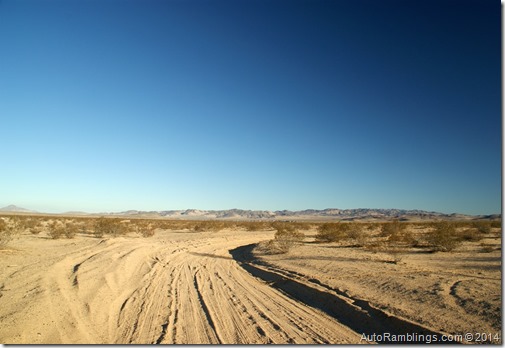
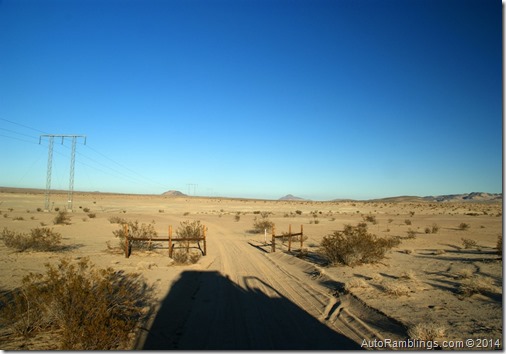
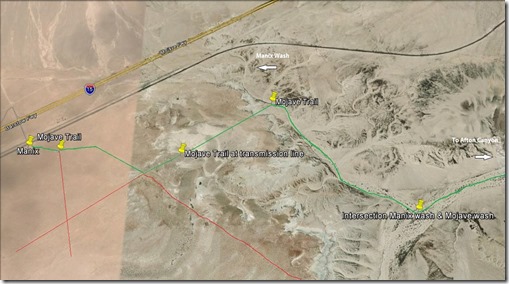
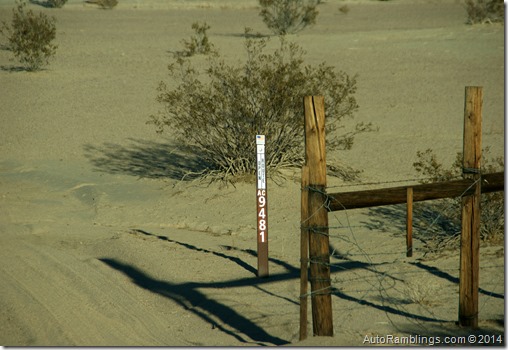






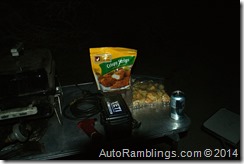







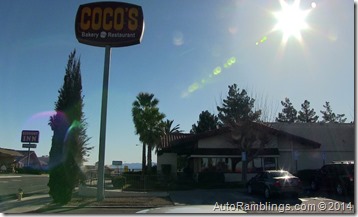







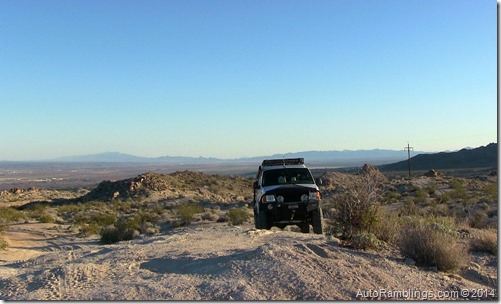










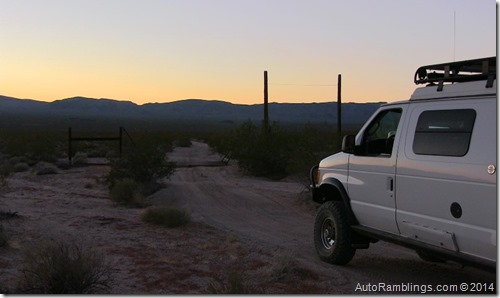


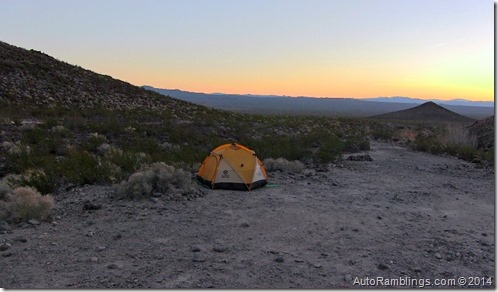







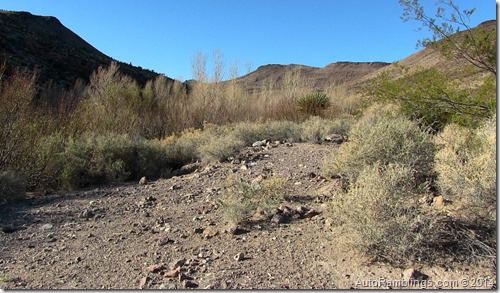

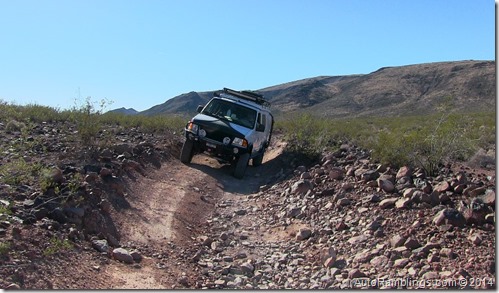























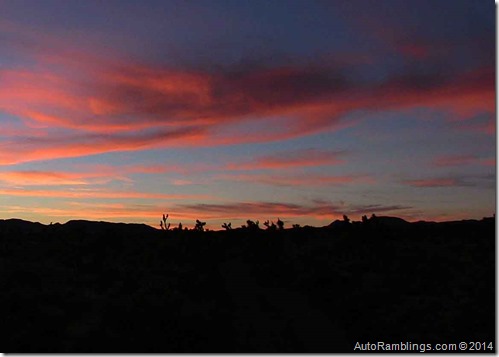

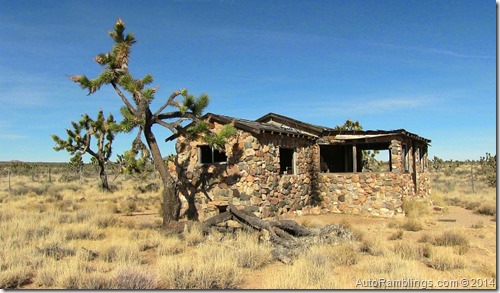
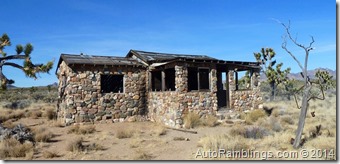















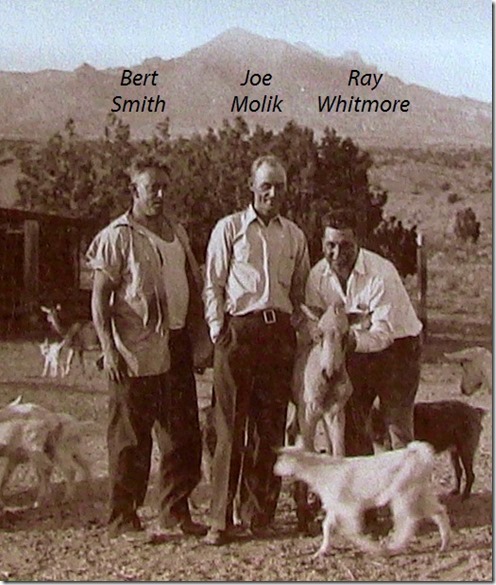
























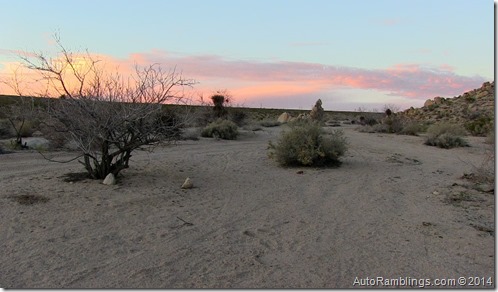


























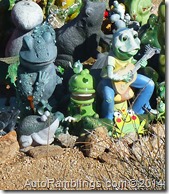


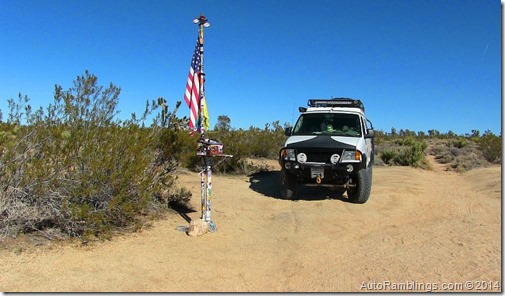





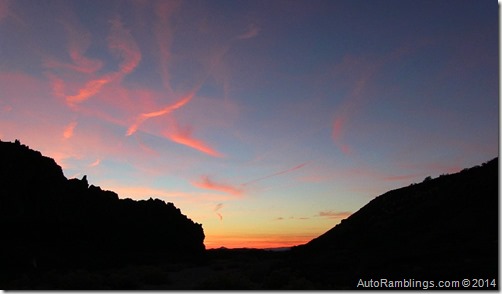











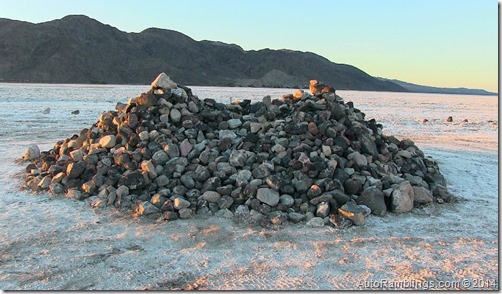

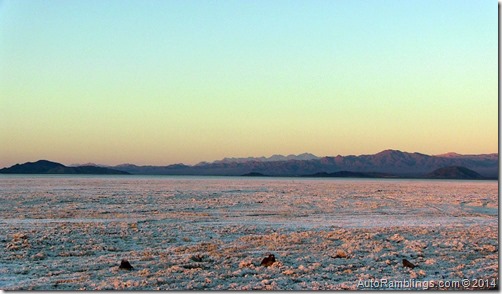





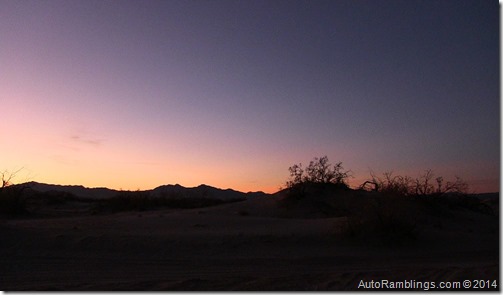


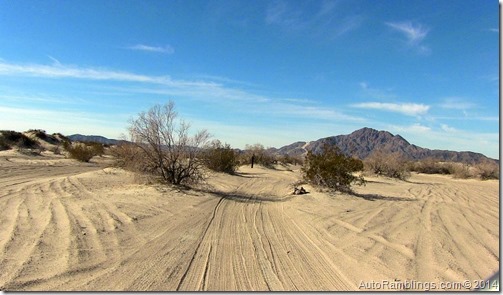






























4 Responses
Hello, nice article. Looking at doing the mojave rd in about a month w a buddy who has a Sportsmobile. A few tight road w overhanging Joshua tree sections have me wondering if my f350 crew cab long bed w Alaskan camper might be a little big. I guess too wide is actually my concern. Your thoughts?
Awesome account of your trip. We are planning on doing the road in just a few weeks, 3/31 – 4/03/2016. Thanks for the pictures and narrative. It was well worth reading.
Very interesting and well done. A great read. Thank you.
Great Post. Great looking website as well..